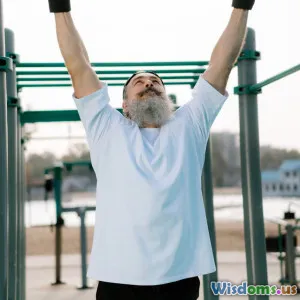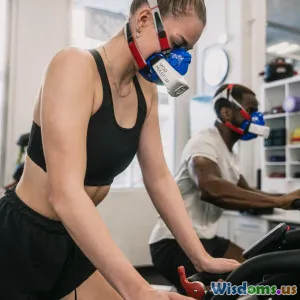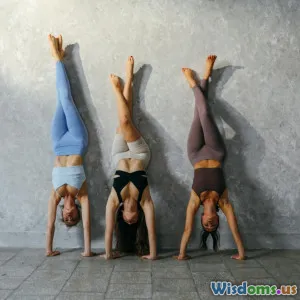
Understanding Aging and Physical Activity
8 min read Explore how physical activity shapes aging, boosting health and vitality at every stage of life. (0 Reviews)
Understanding Aging and Physical Activity
Aging is an inevitable part of life, a continuous journey marked by changes in our bodies and minds. Yet, how we age can vary dramatically from person to person, influenced by genetics, environment, and crucially, lifestyle choices — with physical activity being one of the most significant factors. But why does exercise matter so much as we grow older? How exactly does it influence the aging process? This article delves into the intricate relationship between aging and physical activity, revealing how staying active can not only extend lifespan but also improve quality of life — and provide practical advice you can act on today.
The Biology of Aging: What Changes?
Aging encompasses complex biological processes that lead to a gradual decline in physiological function. Key markers include reduced muscle mass (sarcopenia), decreased bone density (osteopenia), slower cardiovascular system, and cognitive decline. For instance, after age 30, adults typically experience a 3-8% muscle mass loss per decade if inactive.
Cellular aging also plays a pivotal role. Telomeres — the protective caps at the ends of chromosomes — shorten with each cell division, a process accelerated by stress and inactivity. Additionally, oxidative stress and inflammation increase, contributing to chronic diseases like type 2 diabetes and cardiovascular disease.
The inevitability of aging does not mean helplessness; the body's remarkable adaptability means lifestyle factors like physical activity can dramatically influence these biological trends.
Physical Activity: A Powerful Antidote to Aging Effects
Maintaining Muscle Mass and Function
One of the earliest and most visible hallmarks of aging is the loss of muscle strength and mass. Resistance training and weight-bearing exercises counter these changes by stimulating muscle protein synthesis, fostering muscle repair and strengthening.
A landmark study published in the "Journal of Applied Physiology" found that older adults engaging in regular resistance training increased muscle cross-sectional area by up to 15% in just 12 weeks. This improvement translates to better balance, reduced fall risk, and sustained independence.
Enhancing Cardiovascular Health
Regular aerobic exercise improves heart and lung function, crucial as arteries stiffen with age.
The Aerobic Center Longitudinal Study highlighted that individuals over 60 who maintained moderate-intensity exercise had a 30-45% lower risk of cardiovascular mortality compared to those who were sedentary.
Cognitive Benefits and Mental Health
Exercise isn't just about physical strength; it profoundly affects brain health.
Physical activity elevates Brain-Derived Neurotrophic Factor (BDNF), supporting neuroplasticity. According to research from the University of British Columbia, aerobic exercise boosted memory and executive function among seniors.
Moreover, exercise reduces symptoms of depression and anxiety, conditions often exacerbated by aging.
Managing Chronic Conditions
Many chronic conditions associated with aging, such as arthritis, type 2 diabetes, and osteoporosis, improve with tailored exercise regimens.
For example, weight-bearing exercises increase bone density, effectively counteracting osteoporosis's debilitating effects, while mobility exercises alleviate arthritis pain and enhance function.
Overcoming Barriers to Exercise in Older Adults
Despite its benefits, many older adults face challenges initiating or maintaining exercise routines. Physical limitations, fear of injury, lack of motivation, and insufficient knowledge about safe exercise options often hinder participation.
Healthcare providers can integrate "exercise prescriptions," customizing activity plans aligning with individual abilities and preferences. Simple activities like walking, swimming, or tai chi offer accessible options, improving compliance.
Group exercise offers social support, further enhancing mental well-being and adherence.
Real-World Insights: Case Studies
The Blue Zones Phenomenon
Blue Zones are places worldwide where people regularly live beyond 90 with high-quality health. Physical movement is integral to their lifestyle — farmers in Okinawa engage in daily low-intensity labor, the Sardinians walk extensively, and the Nicoyans garden.
Their longevity isn’t reliant on gyms but on natural, consistent physical activity woven seamlessly into the day.
Martha: Age 72, Running Club Member
Martha began running at 65 after her doctor encouraged her to increase physical activity. Within a year, she experienced weight loss, improved blood pressure, and enhanced mood. Her commitment to a local running group also enriched her social life, highlighting the holistic benefits of staying active.
Practical Tips for Incorporating Physical Activity into Aging Lives
- Start Slow and Build Consistency: For beginners, short durations (10-15 minutes) with gradual increments reduce injury risk.
- Mix Modalities: Combine aerobic, muscle-strengthening, flexibility, and balance exercises.
- Listen to Your Body: Modify intensity based on pain and fatigue.
- Set Realistic Goals: Breaking down milestones fosters motivation.
- Seek Professional Guidance: Physical therapists and trainers specializing in geriatrics can tailor programs.
Conclusion: Physical Activity as a Pillar of Healthy Aging
Aging is a dynamic process open to influence. Scientific evidence unequivocally supports that physical activity not only slows physical degradation but also fosters cognitive resilience, emotional well-being, and improved quality of life. Adopting an active lifestyle is arguably one of the most effective, accessible tools to age with vitality and independence. As the renowned exercise physiologist Dr. Kenneth H. Cooper puts it, "Regular exercise is one of the most potent ways to keep humans healthy and functioning well into later life."
Readers are encouraged to prioritize movement in their daily lives — not merely as a task but as a celebration of their capability and potential for lifelong health. The journey to healthier aging begins simply with a step.
References:
- Cruz-Jentoft AJ, et al., "Sarcopenia: European consensus on definition and diagnosis," Age and Ageing, 2010.
- Belfiore RM, "Effect of exercise on telomere length," Journal of Aging Research, 2017.
- American Heart Association, Statistics on exercise and cardiovascular health, 2020.
- Erickson KI, et al., "Exercise training increases size of hippocampus and improves memory," Proceedings of the National Academy of Sciences, 2011.
- Levine ME, "Modeling the rate of senescence: Can estimated biological age predict mortality more accurately than chronological age?" The Journals of Gerontology, 2013.
- Buettner D, "The Blue Zones: 9 Lessons for Living Longer From the People Who've Lived the Longest," National Geographic, 2008.
Rate the Post
User Reviews
Popular Posts




















